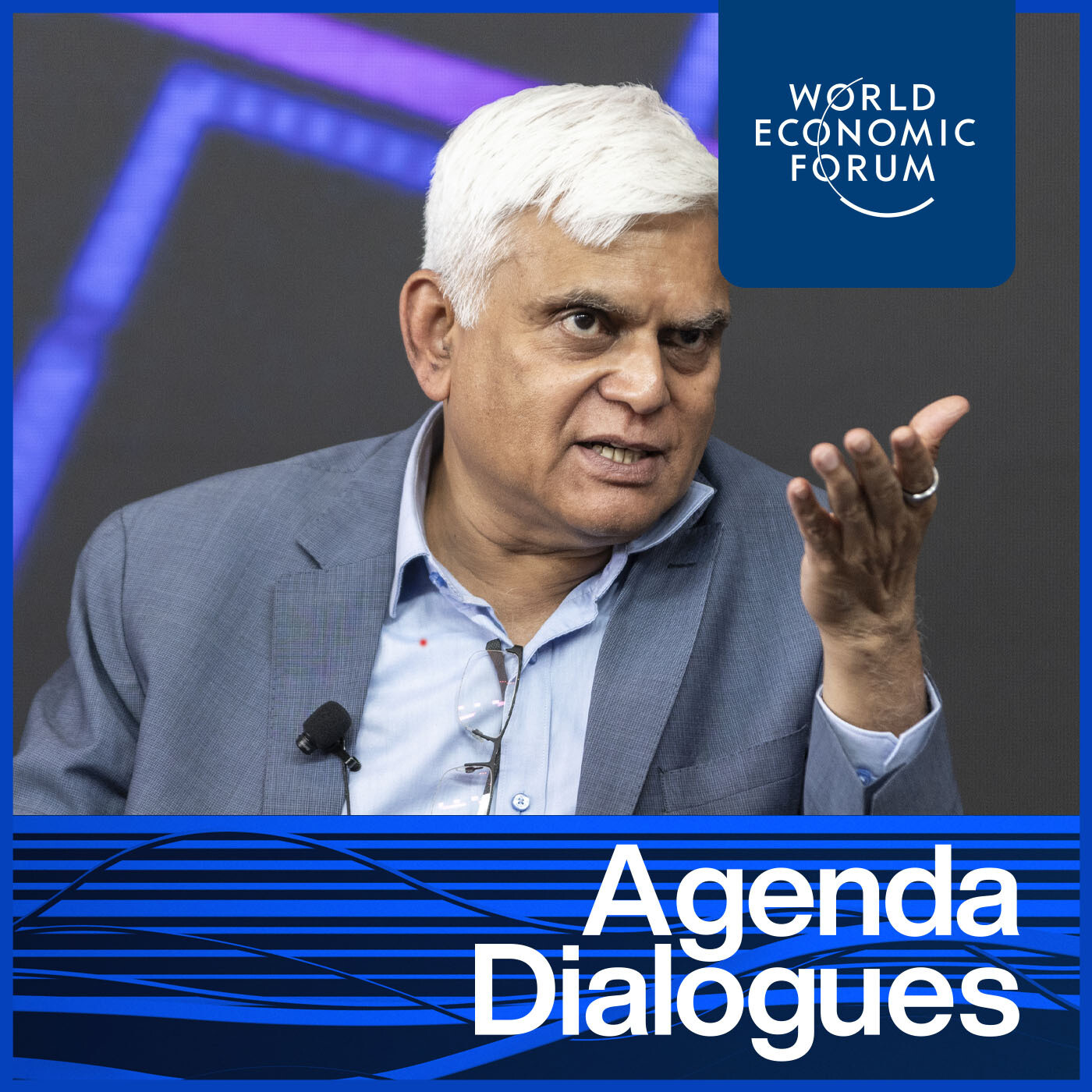Special Meeting 2024: The Role of New Nuclear
ポッドキャスト・トランスクリプト
Rafaela Guedes: So, with that, I'll start the questions because there's so many interesting discussions tackling the nuclear energy. So, Mr Miyanaga, I will start with you.
Following the recent COP28 and the recent energy International Atomic Energy Agency Nuclear Summit, we see a lot of momentum building around the new nuclear. However, public perception is still dominated by concerns around waste management and environmental issues.
According to you, what are the main benefits of the new nuclear and that can be led to a nuclear reanalysis?
Shunichi Miyanaga: Yes. The objective is same, just the benefits of the nuclear problem or nuclear power was a kind of common knowledge – it used to be. And then the summer because of certain reasons and some accidents, so recently the Fukushima Daiichi problem and then I think such kind of benefits were forgotten by some people. And I'd like to stress again, those benefits, very significant benefits of the nuclear power.
Even in, we have been enjoying, over a very long period, the compactness with the conventional nuclear power plant, the very compact of the safe sides. And also not only the compact sides but also the very compact and yes, sure availability and then with the I think it is a kind of closed circuit for one or two year operation. And then if we just decided to further explore such kind of opportunity, we can extend that kind of across circuit operation.
So, that is one site and the longtime operation, continued operation and another thing is the very stable, yes, power generation level and with the progress of the technology, the improvement, now, we can adjust the power level to some wider range. It used to be 10%, also now, the 20-30 to 50% range is possible and it has become a very convenient playground.
And another thing is a very, very stable and reliable power generation. On top of these things, we are developing other new benefits, like much more stable, yes, and safer design and the restoration of the fuel as a transition technology, immediate transition technology for replacement.
The most advanced, yes, next generation, large-sized, middle-sized nuclear power plant and then the many people and organizations are pursuing to realize as soon as possible the small modular reactor and which you will have many other kinds of benefit like the distributed application is possible and also the some, yes, if we integrate the small modular reactors the sizing becomes big.
And with some small application, it is very convenient for the local application for data centre and others. For another benefit, if we proceed, MHI, our company has been very active to develop the high-temperature gas reactor which will be a hope for very cheap and expensive hydrogen production with a very big temperature, high-temperature capacity and another one high fast reactor to realize the recycling of the fuel and extended life of use of the wasted fuel. And I hope, in my life, I would like to see the commercialized nuclear fusion.
Rafaela Guedes: Thank you
Shunichi Miyanaga: That is OK.
Rafaela Guedes: I was sitting beside Kirsty before coming out, and we were exactly discussing how this perception needs to be changed and brought to the mainstream. So from TerraPraxis's perspective that I've been following, that's a lot of things that are happening.
Could you share a bit of this perception and how this has changed and things that you've been achieving within the nuclear space and small reactors?
Kirsty Gogan: Oh, thanks. Well, I'm not sure how much we can take credit for but it's absolutely clear that public perception, you know, is now in majority of support for nuclear energy. There was a major survey that was done last year of several countries, including Sweden and Finland and Poland and the UK and Japan and Germany and in every single one of those countries, they found a majority of support for nuclear energy.
Now, that is because of the contribution that nuclear energy is already making to support energy security, energy, price stability and particularly, in light of the experiences that we've all had over the last couple of years with very high prices and you know, serious insecurity in our energy supplies. But there's also additional benefits that people are really beginning to recognize particularly in the context of, you know, frankly, the abject failure to make progress on reduction of emissions to date.
There's a recognition that we actually need to support decarbonization but in a way that enables continued operation of the global economy. Without emissions, we need to substitute energy services currently being provided by fossil fuels and nuclear energy is a really interesting option to do that because it has a tiny environmental footprint.
It has a very high capacity factor, which means it operates at 90% of the time and it can produce not only power but also heat without emissions and we'll hear in a moment, I'm sure, from my dear colleague about a very, you know, a pioneering project to provide heat and power to an existing industrial energy user.
But through TerraPraxis, what we've been seeing is, you know, really astonishing level of interest from large industrial energy users, global technology companies, oil and gas companies, steel, chemicals and in the green sector that are at the point now in their investment cycle, where they're looking at how they're going to meet their 2030 targets and they're, every single one of them are looking at nuclear energy to support their decarbonization goal but in a way that meets their business drivers.
So, matching the cost and performance that are current that's currently provided by fossil fuels with new emissions free energy services from nuclear technologies. Now we have a long way to go for the nuclear industry to actually respond to that demand in a meaningful way. But we're working on strategies to achieve that. So we have this interesting opportunity right now, to really accelerate the commercialization of nuclear technologies.
And we can learn a lot from the success that we've seen in the renewable space, which enjoyed, you know, very strong support and advocacy, from policymakers, from the environmental community, from leaders, like yourselves, that understood the potential to change the delivery of solar and wind from being something that was expensive and slow and vertically integrated, and, frankly, niche into something which could be really commodified as a highly competitive, scalable and transformative solution for our energy and decarbonization needs.
Let's apply that same success, successful strategies to the acceleration, commercialization of nuclear.
Rafaela Guedes: Thank you. Another thing that we keep in mind. And we were chatting and I was saying that when looking into the energy segments, we go on to solar, to wind, to fossil fuels. And then when taking in consideration nuclear, one other thing that gets to us is within the development is that on the time that it takes to be constructed and other costs.
It starts at one cost and the sensation we have from the Brazilian perspective, we're still waiting for our Angra-3 to be built and it goes on and it goes on and it hasn't finished yet.
So I will start with asking to you, Cosmin, and then asking for for some complementation from Kam, if you could share a bit on this time and this budget, how has it been changing over time? Can we expect it to be in the lower time too?
Cosmin Ghita: Sure. Let me start with drawing a parallel, right. Right now, we're talking about two types of nuclear. Traditional nuclear that has basically, it's probably 70% construction and maintenance and each particular step of it is fully regulated and observed by the regulator.
If I were to draw parallel, think about going to one of those old school English style tailors that look at every part of your body to try to fit that particular suit for you and it takes time and it takes rework and you cannot make sure that you have it available that particular day.
However, we have fast fashion that's coming out now and you have very good suits that are being produced that are very good quality but they're in series. Now, if I were to draw a parallel, the SMRs will probably be the fast fashion of nuclear in the sense that 80-90% of them will be pre-constructed. And this is due to advancements in manufacturing and manufacturing techniques because now you can do military grade, you can do nuclear grade components that will be prefabricated and assembled on site.
Now, this obviously poses a huge challenge to regulators as they will need to look at how they work with supply chains, which become the most important aspect of the development, to be able to make sure that all of these particular quality assurance manuals and so on are at par and they're okay with it. From my perspective, I think that the average construction time period of an SMR can be half of that of a regular reactor.
So, moving from six to seven years to probably three-and-a-half to four. The licencing – now, this is where it's going to take a little bit of time for the first of all kinds as you tailor the design to a grid meet. But then, if you keep the design the same, you automatically replicate it and it becomes very, very smooth and easy to permit process. And as you can see, even in the EU, if we're looking at the Net Zero Industry Act and the recent evolutions of that, they are setting themselves, we are setting ourselves up for success through an accelerated permitted system.
So, the real benefits will be the fleet deployment. And at that point, you enhance supply chains. Now, if I'm to draw a parallel with a similar revolution that happened probably 12 years ago in the solar and renewable industry, we can see the first panels and solar and renewable installations of being a little bit high in terms of cost per megawatt. If I remember correctly, around 2012, a solar panel, a solar farm was trading around in Romania, at least around 1 million, no, around 6 million euros per megawatt per megawatt installed and now it's below a million.
How did it happen? Well, it took 12 years of deployment of scale and public funding to and development to accelerate the development of supply chain and lower the costs of that particular technology. The same thing will need to happen with nuclear and actually with all technologies to be honest if we want if to achieve full decarbonization and I'm not sure we've seen all the technologies yet that are needed and we're not talking about them that are needed to achieve full decarbonization.
So here is where we're going to have public-private partnerships that will have to move forward and it's a new development model. And this is one of the points where governments, regulators, for example, can work with certain certification organizations to develop to achieve that. You're going to have reactor vendors and designers that will be working with construction companies and private funds together with government to try to accelerate deployments.
So there are a number of lessons to be learned and there's a change from the fully how to, I call it sovereign model, which has been the norm in nuclear and it's an interesting and transformative change. But that also requires a lot of understanding and openness and trust building.
So, it's an exercise that, at the end of the day, will help reform societies but build trust and bridges not only between countries as we have seen. Most of these being efforts but within country between various sectors that will be there. So at the end of the day, it's a new philosophy with a topic that's been highly sensitive. It hasn't been discussed very much in the public openness and it will require a lot of reform for itself. But I'm very, I think that we have good practices in other areas that can be easily replicated and we can we can achieve that.
Rafaela Guedes: Thank you very much. And with that, I'll pass to Mr Kam. I think we can go a bit, a step back in terms – I don't know if all the audience and I'm still learning and I would love to understand – when we're talking about the small modular reactors and we do need more knowledge within, broad knowledge in terms of its regulation, support and policies.
Could you ring us a bit on the regulation side, on the policies and how this technology can really reframe now the energy transition in terms of new energies being built?
Kam Ghaffarian: Sure. Thank you so much. Yeah, so if I just go back a little bit and sort of zoom out for a second and look at the problem that our planet is facing, our world is facing, there's a huge need for carbon reduction. I mean, we know that, where if we don't do that, I think our civilizations don't - we gotta make that happen. At the same time, the energy need is increasing. So you got two forces right that work in the opposite direction.
And the energy need that is increasing is increasing dramatically around the world. Population growth, you know, also the energy need per capita, the industrial requirement for energy, all of that is increasing. And one of the things that's happened recently, maybe and especially within the last years, the last year is the energy need of AI and data centres. I mean, that has completely changed the game. I mean, the amount of power these data centres need.
I mean, I was just talking to a hyperscaler recently at their conference and they're going to need like 10 gigawatts of power by 2030. And, you know, so all the energy formulas that we've been thinking about we got to throw out of the door and sort of say, how are we going to meet the energy need? So when you sort of look at it and you say, OK, then if we're not going to use the fossil fuel, of course, we need renewables but how are we going to solve the problem? Then you come to this solution at OK, nuclear.
Now, if you come to the sort of solution nuclear, then you talked about their perceptions, right, of nuclear and all of that. That's why X-energy was formed in 2009. I mean, I'm personally a space cadet, my companies are space. But I did this because I wanted to really combine altruism with capitalism, make a difference, right. And so this is the reason for what I call the generation for nuclear reactors, right?
The founding principles that I came up with for X-energy were for a clean, safe, secure, affordable energy solution that's 100% clean. And as the gentleman indicated, my first idea was hydrogen and I realized that the hydrogen economy is not viable without a heating source that make it economically viable. And that's how I turn into nuclear.
And so also it has to be so that generation for nuclear access energy exceed 100, is 100% safe and that and when I say safe, I don't mean by some electronic intervention. That, you know, if you lose cooling, then you know, you get super critical like it happened in Chernobyl or Fukushima. No matter what happens, they're intrinsically safe. That's the XE-100 reactors doesn't matter if there's an earthquake or if there's a tsunami, you know, so that's why I think the perception is changing and also secure.
Rafaela Guedes: So I think that it's interesting for the audience to know: when you mean safe like because what happens, tell me if it's that, we have like the enrichment of the uranium, it goes on happening but now when you're talking about this new technologies, if something happens and it goes out of control, it stops the enrichment.
Kam Ghaffarian: Not the enrichment; what happens is, actually, the feedstock to our fuel is higher, say, LEU [Low Enriched Unranium] the enrichment that's up to 20% that goes inside the fuel. And so if let's say you lose cooling and by the way, this is all 100% been tested. So what I'm saying is not just the hypothesis, it's been tested, 100% proven.
So if you lose cooling, like what happened, let's say Fukushima, the temperatures goes up a little bit and then it automatically comes down. So that it will never go to a supercritical situation where you have radiation leak and dangers. So that's why it's 100% intrinsically safe and the physics is not by electronics, it's by physics itself.
That's why this is fundamental Holy Grail, your nuclear is safety. And we've solved that problem, 100% proven, you know, derisk and today, actually, Chinese are operating a pebble bed modular reactor generation for even though it's not a small modular reactor, it's high. That sort of proves that this technology is actually derisked and it actually works.
And then the last piece is something that is affordable, right so you can compete with natural gas. And we're really fortunate that we have created this partnership with the US government. So US government is actually a private-public partnership, is our partner we want to, we were very fortunate to win a two-and-a-half-billion-dollar grant. It's a 50-50 cost share with US government. And now we got a customer with, we're very proud to have Dow Chemical as our first customer rebuilding the first plan in Seadrift, Texas.
So yeah, this partnership that I think you discussed, where you have the US government, you have a technology provider, a vendor like X-energy and working with a customer and actually this is interesting, 25% of the world energy today is industrial needs, right. And what HTGR, the technologies like X-energy provides is because of the high temperature they generate is really perfect for hydrogen production, for water desalinization, for cement factories, for petrochemical companies, as well as he indicated, what we actually do is we, it doesn't require water for cooling.
The modules can be carried the back of a truck, back of a train. And you can deploy it anywhere; you can literally have one of our SMRs in the middle of a data centre or in the middle of a CDN, doesn't require as much footprint to be able to do that.
And then one last item that I want to say is because of the need of amount of power that the world needs, we need to completely think differently. We cannot no longer go with sort of one-off scenario, we need to be able to scale this like you create cars. So our idea is we will have factories where you start to create modules like legos, you take it to the side and you assemble it and you have fuel factories around the globe that actually feed the reactors.
Rafaela Guedes: Thank you very much.
Mr Miyanaga, I was listening to you in the room as well and want something interesting from Mitsubishi's perspective. So, when moving forward, we started saying in Japan, in the US but definitely for the developing countries, this can also be an interesting alternative. And if we really move forward and with the right policy in place and competitive price, this could be something interesting.
If you could explore a bit of this in terms of how could – with the right price being competitive – how could it help and for which users?
Shunichi Miyanaga: Yes, I think the small majority of them. Yes, for example, it is a very, a kind of a breakthrough technology for the near future, because of the activity with such kind of concept, the modular design is a very standard and also small means, the small modular means that I think that as you're concept, yes, the pre-production at the factory as much as possible and then the cost and quality will become more, much more reliable and then the easy-to-manufacture produce.
But I think before the very gigantic, the conventional reactor, we have established expertise and skill but we will need to maintain a very high quality engineering railroad, the workmanship. And so, I think if we keep listening for the future development to the nuclear fusion and others that kind of large scale reactor will remain a very important facility. But I think for other common or popular use.
Maybe there'll be some yeah in the future. I think preproduction as much as possible and that means the site work will be reduced very much. And not only the quantity of the volume of the site work is reduced, the difficulty is again, because very high rising and big, heavy machinery installation because a lot of difficult foundations and the installation techniques.
But the distributed, small, ultimate compact design for modular reactor could ease a lot of site work. That is the end not only the cost of labour but also time duration when it comes and we can expect that kind of benefits and the capital expenditure will be reduced. And I think with the common design, I think we can expect a lot of cost reduction.
So, I'm looking at the current station and the energy cost with the renewables. But when we look at the capital expenditure of course compared to the wind turbine, onshore wind turbines have mostly nuclear is much more expensive. I think they grasp them much longer. And also the offshore wind farm is more expensive.
And then if we use such electricity to produce hydrogen for some purposes and then I think such kind of total energy cost and TND transmission and distribution network cost will require. So, I think only as a whole, the energy cost is rising and looking at such kind of the current station and the future costs on the price exclusion by other US renewables and other sources.
The nuclear competitiveness will not be deteriorate. I think probably I can expect we can make it more competitive in terms of the cost and also in terms of the construction cost and the capital expenditure costs.
Farther to say, the fuel itself because if we enrich anymore and we can expect a longer continuous operation and in the future by doing so, the operation will become very stable and the cost expectancy will not be, we cannot be concerned about the future oil and gas are the other kinds of the dependence. Yes, energy costs of the operation, the fuel costs and other kinds of concerns.
So, I think the new nuclear will provide us very good opportunity to be basic, very reliable, stable energy source.
Rafaela Guedes: Thank you.
With that, Kirsty, thinking of all these things that are going on if you had to line up here, talk challenges, risks being evaluated, how could we look at where we are now to bring this alive in terms of being something feasible and achievable for many countries?
What are the main challenges and risks?
Kirsty Gogan: Yeah, so obviously, the technology readiness is absolutely key. And we've heard about the importance of technology demonstration and that's underway now. I mean, we have many demonstration projects underway, including X-energy and also including some of the microreactors which are very interesting. Those are the reactors that can, you know, be made in factories today, mass produced at scale, licenced in the factory and we'll see demonstrations of those technologies starting to operate as soon as 2026.
So that really is a timeframe that could be relevant to the 2030 targets that we were talking about a moment ago. But in addition to that, to achieve the speed to market, to achieve the scale of deployment that's needed, to achieve the cost and the performance requirements that are going to be needed to meet the industrial energy users' requirements, we're going to need to see significant investments in standing up supply chains.
Now organizations like MHI, as well as you know, other large manufacturing companies that are already building high quality, high performance, highly regulated, you know, infrastructure could absolutely be building infrastructure for nuclear technologies as well. So this isn't all starting from you. It's really about transferring existing industrial capabilities to meet this need.
In addition, we'll need a licencing pathway that's really commercially viable and we've been working with a group of oil and gas companies in the United States interested in deploying microreactors to support decarbonization of their upstream operations. We identified 50 gigawatts of existing generating assets of between 1-5 megawatts, so tiny 50 gigawatts of existing generating assets that they're interested in decarbonizing with microreactors.
So, we took that to the regulator in the United States and you know, we're feeling cautiously optimistic that it would be achievable to develop a commercially viable licencing pathway to enable, you know, the decarbonization of those assets through commercially viable licencing pathway that would enable rapid delivery from decision to generating assets.
So licencing is really key. But there's ways in which it's not just sort of, you know, regulatory reform and the regulator's coming to the table, which is really critical. It's also designing out regulatory scope. It's also about reducing as much as possible the nuclear island. We're seeing examples of separation of the nuclear heat island from the power Island, which just overall reduces the regulatory scope and regulatory oversight needed all the way through from design engineering to manufacturing or construction, and then operation.
There's also licencing innovations or design innovations that can enable standardization, which means that you might licence once but then be able to build many, many, many and then we're going to need to see collaboration internationally between regulators to enable, you know, proven demonstrated technologies to be deployed into multiple markets.
Rafaela Guedes: Who are the companies that you think that will be the first adopters of segments that will be the first adopters with this?
Kirsty Gogan: So Microsoft published a policy briefing at COP28, recognizing the role of nuclear energy alongside renewables to support the decarbonization of their operations and they're interested in accelerating the commercialization of nuclear technologies through direct investment, signing PPAs, policy advocacy.
So, certainly the data centre sector that has 10s of gigawatts of demand in the 2030 timeframe and need some highly reliable emissions-free energy. I mean, 99.999% is put at the gigawatt scale but then also oil and gas is really interested in decarbonizing oil production to enable continued access to resources in future, continued licence to operate. And then we're seeing the marine sector as well.
The IMO finally, last year, set targets for 2050 decarbonization with dates along the way starting in 2030. And the marine sector is also very interested in accessing energy services from nuclear energy.
Rafaela Guedes: Thank you. Cosmin, one part that we haven't tackled yet and this is a perception but I think it's been changing as well, is relative to the waste.
So we've mentioned here, it's scaling up the investment needed to scale this out the regulation, that these are small reactors, so it's a lot safer. But then with the waste what could you bring to us in terms of that?
Cosmin Ghita: Let me start with the first thing. The waste produced by nuclear energy, in terms of footprint per megawatt produce is the smallest amount of waste out of all energy production forms and I've had the opportunity in my brief career to see multiple forms of electricity production.
Supplementary to that, it's probably one of the big, most regulated industries in terms of management of waste. So currently, I would say that this is probably one of the safest areas to look at. However and this is would be the point I'd like to put into is that with less production and the newer technologies that we're seeing have a probability of smaller waste footprint.
But we're looking at advanced reactors as well. So right after these SMRs that we're talking about that are you know, using conventional technology scaled down to size, we are looking at advanced reactors that could potentially be waste burners or we can see reprocessing of nuclear waste in it to be able to have closed-in cycles and a lot of the advanced generation for technologies that will be the next step afterwards are looking at that.
So in Europe at least, we're looking a lot of other countries are looking at treating waste as a resource. So I know that the debate around proliferation in other places but with the advancements in technologies that we're seeing today, a lot of the old concerns around recycling aren't going away because there's more and more solutions that are coming out there that are proliferation proof and also help you achieve more energy production without necessarily having a waste footprint.
So at the end of the day, when you're going to have an energy system mapped out, probably by 2050, as everyone's planning, there's a goal by 2032, 2035 and one by 2050. When you look in the long term, you will see mixed technologies that will help complement and close the fuel cycle. And in that sense, you can actually have zero if not close to zero, if not zero footprint.
So the idea is when you're going to start looking at deploying these types of technologies, the outlook needs to be very, very long. I know that the outlook that we're looking at right now has to do with the repayment of the financial structures that are being put in, which is probably 15-20 years after commissioning of a nuclear facility but a nuclear facility operates 80, can go all the way up to 80 years.
Rafaela Guedes: Wow.
Cosmin Ghita: So the commitment is a century-long commitment. Therefore, the view and the plan that everybody needs to implement is 100-year plan. And that's basically probably the number one piece, step that every government or entity that wants to get into this or region has to look at a 100-year plan.
Kirsty Gogan: That will hopefully change, right, when we have a situation where we have manufactured reactors being made at scale. It's all about derisking investment and not necessarily requiring that very, very long payback time.
Really, the fundamental derisking that's needed is around confidence for budget and schedule and ultimately cost and once we achieve those very low costs and that confidence around budget and schedule, then there's going to be a massive investment opportunity that doesn't necessarily rely even on those very long operating lives.
Kam Ghaffarian: Yeah. But you'll want to you want to depreciate your technology as much as possible.
Kirsty Gogan: As soon as possible.
Kam Ghaffarian: Yeah but you'll want to depreciate your technology as much as possible. So, if you want to have true gains, probably with CapEx being the highest costs, lying in the cost structure of a particular nuclear reactor and the resulting levelized cost of electricity. Once you depreciate it, how do you say, you know, what you have afterwards is great. So, having a long-term use case, it makes a lot of sense.
Rafaela Guedes: Do you, Mr Kam, want to add to this?
Kam Ghaffarian: Yeah, I mean, like in our case, I agree with her that I think we need different kinds of thinking. And to be honest, if you sort of look at X-energy in many ways, we sort of follow the SpaceX model, that we want it to be very expensive, disruptive in terms of technology and find a different way where we can solve this problem.
So, not only we want it to be disruptive from technology perspective, also from our business model perspective. So, find a government partner that helps you with your first-of-a-kind costs. I mean, just think about it, if somebody came and said hey, I'm gonna give you $2 billion and I don't require any IP and you get no dilution, that's pretty good deal, right, and also providing maybe additional tax credit like in the United States with the Inflation Reduction Act, with that's really helped us a great deal. We feel like we're going to be extremely profitable business in a very short period.
Once we get past our first of my kind, which is very close to doing that. And by the way, the other thing we're doing is probably I think they're maybe the only company in the world and not only producing nuclear reactors and microreactors, we also provide fuel for the nuclear reactor like as as he indicated, life for a nuclear reactor is 60 to 80. years. So think of it like selling printer cartridges. So I think fuel business by itself could be extremely profitable as well.
And let me just share this, which I think is really important as I started in 2009, the company: creating a nuclear business and a commercial front is not easy. Let's just put that out there. Since I'm in this space, I tell people that it's easier to land a rover on Mars than really start a nuclear plant and build it from scratch. And the reason is, I think there are three bubbles that need to work together very closely and integrated. And if they're not, it's not going to work.
So first, the technology, you got to have the right technological solution; otherwise, it's not going to work. I think the second bubble is regulatory, right? So if you design the most elegant reactor ever, and you can get it licenced, you haven't accomplished anything.
Now, let's say that you you have now come up with an incredible design and you can get it licenced but it's not economically viable in terms of kilowatt per hour. People are not going to use it, right, if as much as when we have this need for decarbonization. So economic viability, the regulatory and technology I think that all needs to be working together to make this happen.
And I think that requires, I believe, different kinds of thinking rather than traditional nuclear years, where it takes a long time to produce and I think one of the key things is standardization because you don't want to go back to regulator every time you put a new one in so the way we're doing ours, we have a four pack, that is a standardize. We're going to get licenced for this. And every time we sell it, that's where we're going to sell like a box that has been already licenced so we can repeat it over and over and over again.
Rafaela Guedes: Thank you so much. We are in like 50 minutes to end. I think that we've got a very interesting perspective here. In terms of it's much safer than what we had the perception before. Technology is already there. We still need to speed it up and for that we will need economical viability and to achieve this economic viability, we need some support.
We need some schemes in the beginning but then bringing it along we will have like long-term cycles, reliable energy and that will be able to be used not only by developing, developed countries but developing countries and for several uses, industrial uses, data centres. So with that, I think we are ending up but I would very much like to thank you panellist for this and for the audience to be here.
Nuclear energy is part of the solution to meeting the growing demand for green power, with innovations from small modulator reactors to fusion providing opportunities beyond existing power plants.
What is the enabling environment needed to support the commercial viability of new nuclear solutions?
This is the full audio from a session at the Special Meeting on Global Collaboration, Growth and Energy for Development in Riyadh on 29 April, 2024. Watch it here:
Catch up on all the action from the Special Meeting on Global Collaboration, Growth and Energy for Development at wef.ch/specialmeeting24 and across social media using the hashtag #specialmeeting24.
Speakers:
Shunichi Miyanaga, Chairman of the Board, Mitsubishi Heavy Industries, Ltd.
Rafaela Guedes, Senior Fellow, Brazilian Centre for International Relations (CEBRI)
Kirsty Gogan, Founding Director and Co-Chief Executive Officer, TerraPraxis
Kam Ghaffarian, Co-Founder and Executive Chairman, Axiom Space, Inc.
Cosmin Ghita, Chief Executive Officer, Societatea Nationala Nuclearelectrica SA
Check out all our podcasts on wef.ch/podcasts:
トピック:
エネルギー転換その他のエピソード:
「フォーラム・ストーリー」ニュースレター ウィークリー
世界の課題を読み解くインサイトと分析を、毎週配信。










